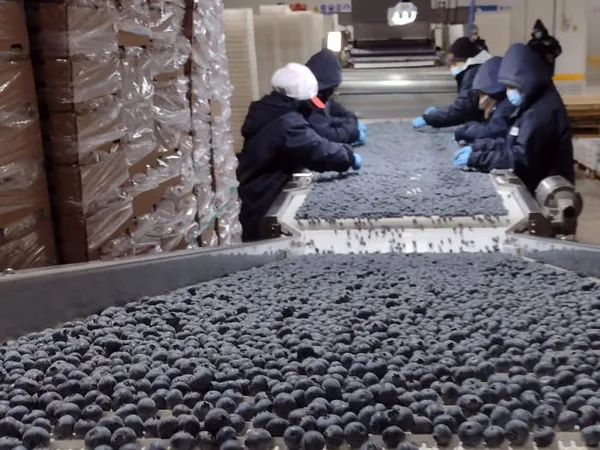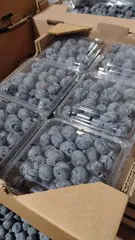Blueberries are undergoing the transition from the domestic season to imported berries. Currently, domestic production is still happening in Michigan, Oregon, Washington State and British Columbia. “These regions are experiencing not ideal weather among other operational challenges. They’ve had a good run. But this is the time where the condition of the fruit starts to not be ideal--you can see this at the store level and retailers historically had to hang onto that fruit because there weren’t other options,” says Luciano Fiszman of Gourmet Trading Co.
At the same time, over the past few years, Peru has been increasing its volumes and sending fruit earlier and earlier to the U.S. and has already started this season. While the Peruvian volume is smaller than domestic volumes currently being offered, those supplies will steadily increase and hit peak volumes sometime between October-November.
Quality is also better on Peruvian fruit. “The fruit looks very good and the growing conditions are great,” says Fiszman. “Over the past few years, growers have learned that they’re not just growing blueberries but instead are growing different varieties. They’re treating each variety as they should and are getting the best out of each variety.” Peru’s winter was colder as well which also could be making for a better eating experience of Peruvian blueberries.
 Organic blueberries from Gourmet's Peru operation being packed in Chepen.
Organic blueberries from Gourmet's Peru operation being packed in Chepen.
Organic blueberry demand
While conventional volume has grown from Peru, so has organic volume. “I know there will be plenty of organic fruit out there and it will be interesting to see what happens because I don’t know if the demand is there for both,” says Fiszman. After all, some premiums for organic fruit have come down thanks to the increased availability of organics. Gourmet Trading itself has presold its organic fruit, grown on its own farm in the north of Peru. “The key to grabbing the added value is the marketing strength to get the best programs out there. In the past, it was spot marketing. Now it’s making sure you’re aligned with the right retailers,” he says.
Meanwhile, Mexico is also shipping fruit which Gourmet Trading will start in a few weeks. He notes some retailers are more interested in this fruit even with the volumes coming from Peru. “The Mexican fruit is fresher--you get to the market the same week you’re picking and there’s no stress from the ports and vessels,” he says.
This comes at a time when demand for blueberries in the domestic season has been phenomenal, says Fiszman. “If we carry that into the import season, I’m very optimistic,” he says. “Ten days ago, buyers were still not interested in talking about Peru. This week they are asking what’s coming next.”
Keeping fruit moving That said, with the volume that is coming, Fiszman notes there will be challenges to ensure good movement. “Is demand expanding fast enough to absorb that offer? That’s the biggest question mark,” he says. “That’s why we need to communicate with retailers on what to promote, to make sure that price is competitive on both ends and it also needs to be supported by quality fruit. If you have the quality, you have a shot. If not, no chance. Like real estate is location, location, location, in our business, it’s quality, quality, quality.”
That said, with the volume that is coming, Fiszman notes there will be challenges to ensure good movement. “Is demand expanding fast enough to absorb that offer? That’s the biggest question mark,” he says. “That’s why we need to communicate with retailers on what to promote, to make sure that price is competitive on both ends and it also needs to be supported by quality fruit. If you have the quality, you have a shot. If not, no chance. Like real estate is location, location, location, in our business, it’s quality, quality, quality.”
Managing logistics also factors into that. “That’s where I am putting in more of my time than in my previous 16 years. If you have the best farm with the best grower in location A to bring fruit to destination B, if I can’t do a good job from A to B, I have nothing,” he says.
As for pricing, given the transition, it’s currently sitting at a two-tier market where pricing for good fruit is higher than it was than last year at this time while pricing for average quality fruit is similar to last year.
 For more information:
For more information:
Luciano Fiszman
Gourmet Trading Co.
Tel: +1 310 216 7575 ext 1888
Luciano@gourmettrading.net
www.gourmettrading.net
